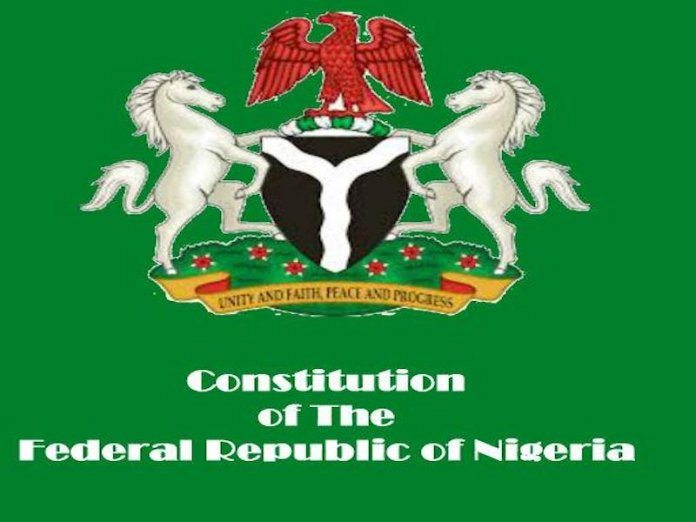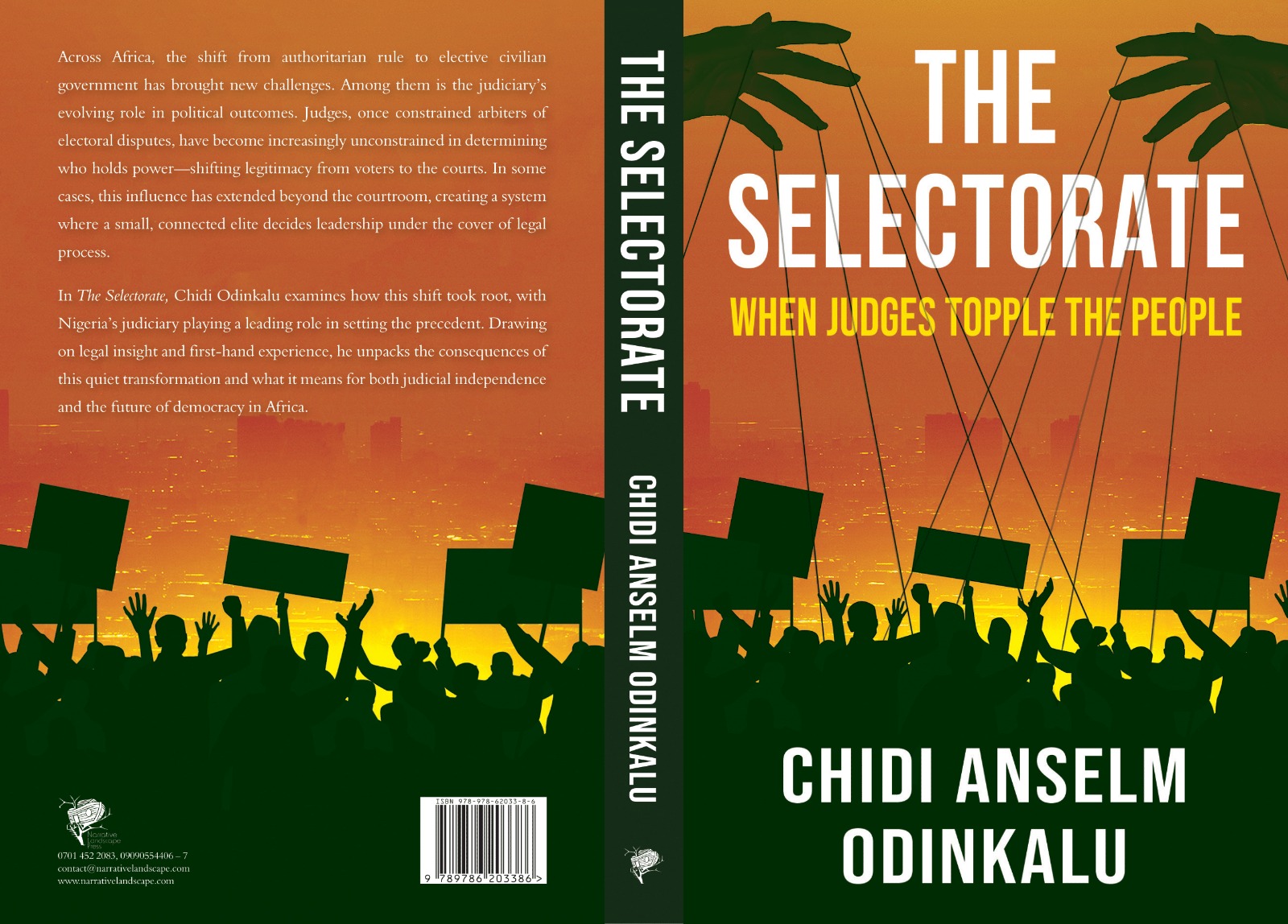By Fredrick Awkadigwe
Introduction
From the time of Osawe & 2 Ors v Registrar of Trade Unions (1985) 1 NWLR Pt 4 Pg 755, till today, the Supreme Court of Nigeria, SCONA, has consistently held that section 45(1) of the Constitution of the Federal Republic of Nigeria, CFRN, is a limitation clause on fundamental rights entrenched in sections 37-41 of the CFRN.
The objective of this work is to determine whether section 45(1) of the CFRN, as held by SCONA, is indeed a fundamental right limitation clause; or an unconstitutional judicial construct that has significantly harmed guaranteed fundamental rights of persons in Nigeria.
Fundamental rights in sections 37-41, not limited by section 45(1), of the CFRN.
Fundamental constitutional rights are those rights of persons which stand above the ordinary laws of the land, and which in fact are antecedent to the political society itself. See Eso, JSC, in Ransome-Kuti v The Attorney General Federation (1985) 2 NWLR (Pt. 6) 211. The fundamental rights are so basic that they are inserted into the Constitution of the Federal Republic of Nigeria in sections 33-45. Like every other right emanating directly from the provisions of the CFRN, they cannot be controlled by the legislatures unless with a constitutional approval. See NCP v National Assembly (2016) 1 NWLR (Pt 1492) 1 CA.
Fundamental rights are variously controlled in the national constitutions of different countries, by different constitutional mechanisms. Under the CFRN, the different constitutional mechanisms used, range from the use of exemption terms or phrases within a fundamental right section to exempt some attributes of the protected fundamental right, as seen in section 33(1) of the CFRN; the use of subsections to create some exceptions to the preserved fundamental right, as seen in section 34(2) of the CFRN; use of the schedules to the CFRN to empower the legislatures to make ordinary laws in fields already covered by the fundamental rights section, seen in sections 4 & 40 of the CFRN, and Item 34 & 56 of Part I of the Second Schedule to the CFRN; use of another section of the CFRN to create a parallel or opposing right, seen in sections 37 & 39(1) of the CFRN; empowering the legislatures to make restrictive ordinary laws in the field of the fundamental right, as seen in section 41(2) of the CFRN; the use of fundamental right limitation clause to empower the legislatures to limit fundamental rights in a particular condition, which is what this work is set to pulverize; or empowering the legislatures to make ordinary laws that derogate fundamental rights in periods of emergency.
The legislatures cannot employ a mechanism outside the ones provided in the CFRN. A fundamental right that escapes all these constitutional mechanisms of limitation, is still not absolute; the courts are there to balance out competing ‘absolute’ rights at the end of the day.
In Aviomoh v COP (2022) 4 NWLR (Pt. 1819) 69, SCONA holds, though as what appears to be an orbiter, that section 45(1) of the CFRN excludes the supremacy provision in section 1(3) of the CFRN. How SCONA arrives at that conclusion is most baffling in the light of the clear provisions of the CFRN, and the previous decisions of the same SCONA, particularly in Nkwocha v. Governor of Anambra State (1984) 6 S. C. 164. A concession to the existence of constitutional limitation clause of section 45(1) of the CFRN on sections 37-41 of the CFRN, is a concession that the legislatures can limit the rights in sections 37-41 of the CFRN even by the criminalization of the exercise of the rights.
The law, as ordained by section 4 & 318(1) of the CFRN and Parts I, II & III of the Second Schedule to the CFRN, is that for a legislature to have the competence to legislate an ordinary law on a constitutional legislative matter that shall have been constitutionally assigned to the legislature, the legislature shall have a competent substantive constitutional legislative power to legislate on a competent substantive constitutional legislative matter. See also AG Abia v AG Federation (2002) 6 NWLR (Pt. 763) 264; (2006) 16 NWLR (Pt. 1005) 265 SC.
A fundamental right limitation clause crystalizes a substantive constitutional legislative matter under Item 67 of Part I of the Second Schedule to the CFRN, and creates the ground for criminalization of the exercise of the right under Items 67 & 68 of Part I of the Second Schedule to the CFRN.
There is nothing in subsection 45(1) of the CFRN, outside the marginal note of the section 45, that suggests that there is any intendment to permit the legislatures to ‘derogate’ the fundamental rights guaranteed in sections 37-41 of the CFRN. The marginal note of section 45(1) of the CFRN reads: ‘Restriction and Derogation from Fundamental Human Rights’. While ‘limitation’ is the restriction term used in peace time, the term ‘derogation’ is the restriction term used in international conventions to signify restrictions of fundamental constitutional rights in periods of emergencies. See the difference between the Limitation Clauses (Part I) and the Derogations in a Public Emergency (Part III) of the Siracusa Principles on the Limitation and Derogation Provisions in the International Covenant on Civil and Political Rights, U.N. Doc. E/CN.4/1985/4, Annex (1985).
The SCONA, relies on the marginal note, and repeatedly uses the term ‘derogation’ to refer to subsection 45(1) of the CFRN in its decisions, in periods of no emergency. As far back as 1982, the Supreme Court of Nigeria has admonished, in the case of Uwaifo v Attorney General of Bendel State (1982) LPELR-3445(SC), that marginal notes, explanatory or side notes are to be ignored as mere aids in construing provisions of statutes.
Furthermore, section 45(1) of the CFRN has not excluded, in any way whatsoever, the general constitutional invalidating effect of the provision of section 1(3) of the CFRN from the purpose of section 45(1) of the CFRN. The law is now well settled that no provision of a section of the CFRN shall restrict or limit the other. One section of the CFRN cannot limit, derogate or override the provision of another section of the CFRN. See Opara & Anor v Amadi & Anor (2013) LPELR 20747(SC). To reinforce the above recounted jurisprudencial matters of constitutional interpretation, the case of Nkwocha v Governor of Anambra State (1984) 6 SC 164, becomes relevant. In Nkwocha’s case, section 315(5) of the CFRN excludes the invalidating effects of section 1(3) of the CFRN, from invalidating any provision of the Land Use Act; yet, the Nigerian Supreme Court still refuses to recognize the exclusion, and goes ahead to hold that any provision of the Land Use Act that is in conflict with the provision of CFRN shall to the extent of the inconsistency be declared null and void, by virtue of section 1(3) of the CFRN.
If section 315(5) of the CFRN, that has expressly excluded the invalidating effect of section 1(3) of the CFRN, cannot save conflicting provisions of the Land Use Act from the provisions of the CFRN, is it section 45(1) of the CFRN, that does not exclude the invalidating effect of section 1(3) of the CFRN, that can save the provisions of conflicting ordinary laws made within the scope provided in section 45(1) of the CFRN!
There is also no term of limitation in section 45(1) of the CFRN. The text of the passage does not contain words associated with limitations. Instead, the passage appears to be an affirmative provision, confirming that laws reasonably justifiable in a democratic society will not be invalidated by sections 37-41 of the CFRN. It is not only sections 37-41 of the CFRN that can invalidate an ordinary law; section 1(3) of the CFRN is lethal; and even if sections 37-41 of the CFRN does not invalidate, section 1(3) will still go ahead and invalidate any conflicting ordinary laws.
In other words, all the ordinary laws made within section 45(1) of the CFRN, are only valid to the extent that they do not in any way, seek to invalidate the clear provisions in sections 37-41 of the CFRN. The use of permissive, rather than restrictive, words in paragraphs a & b of subsection 45(1) of the CFRN therefore clearly shows that there is no intention to limit the fundamental rights in sections 37-41 of the CFRN through subsection 45(1) of the CFRN. Section 45(1) of the CFRN is therefore a shield, and not a sword.
All the ordinary laws, made within subsection 45(1) of the CFRN, are saved from the invalidation of sections 37-41 of the CFRN by the provision of subsection 45(1) of the CFRN, while sections 37-41 of the CFRN are also saved from the invalidation of ordinary laws made within subsection 45(1) of the CFRN by the provision of section 1(3) of the CFRN.
Nigeria does not need limitation clause for state protection and preservation.
The SCONA’s position that section 45(1) of the CFRN is a limitation clause on sections 37-41 of the CFRN, is without any constitutional legislative basis or value, as the limitation offered by section 41(2) of the CFRN, for instance, to the fundamental right in section 41 of the CFRN, is even wider in scope and extent than what SCONA purports to attribute to section 45(1) of the CFRN. While section 41(2) limits the right to movement whenever it is reasonably justifiable in a democratic society, section 45(1) of the same CFRN purportedly limits the right to movement, when it is reasonably justifiable in a democratic society in certain circumscribed public and private interests. Assuming without conceding that section 45(1) of the CFRN is a limitation clause on section 41 as held by SCONA, the reasoning of the courts will therefore suggest that section 45(1) of the CFRN is promulgated to provide a limitation that is already provided in section 41(2) of the CFRN, albeit to a spent and vain extent.
In the US, fundamental rights are couched in absolute terms, while fundamental rights in Canada, are couched in relative terms of a limitation clause. See Section 1 of the Canadian Charter of Rights and Freedoms, as Part I of the Constitution Act, 1982, which is enacted as Schedule B to the Canada Act 1982, 1982, c. 11 (UK). The US Supreme Court (SCOTUS) has fashioned limitations by itself. See District of Columbia v. Heller, 554 U.S. 570, 626 (2008). The lack of a limitation clause in the US national Constitution has not resulted in rights being deemed absolute but rather in the judicial implication of limits. See Stephen Gardbaum, The Myth and the Reality of American Constitutional Exceptionalism, 107 Mich.L. Rev. 391, 401 (2008).
Although the USA has no limitation clause in its national Constitution, yet it has numerous ordinary fundamental right limitation laws, signifying that the absence of limitation clauses in national Constitutions does not mean that fundamental rights cannot be limited by ordinary laws. According to Justice Black, in Black, The Bill of Rights and the Federal Government, in The Great Rights, p. 60 (Cahn ed. 1963), the Bill of Rights is constantly watered down through judicial ‘balancing’ of what the Constitution says and what judges think is needed for a well-ordered society.
Black maintains that ad hoc judicial balancing gives the courts and the Congress greater powers of overriding the texts of the Bill of Rights on a finding that a weighty public interest exists. As Irving Brant see Irving Brant, in ‘Seditious Libel: Myth and Reality’, 39 Nyul Rev 1, 18-19 (1964), says that the balancing test developed by SCOTUS does not dis-enable the legislatures of the power to trench upon the field in which the Constitution says that the Congress should not make ordinary civil laws. See Garrison v Louisiana 379 U. S. 64, 74 (1964).
The far-reaching effect of Irving Brant’s position is that the US legislatures are free to churn out ordinary laws in restriction of persons’ guaranteed constitutional rights until the judiciary intervenes.
The major difference between ordinary laws made pursuant to a limitation clause and those made without the authority of a limitation clause, is in the judicial approach in the construction of the ordinary laws. The court will place judicial reliance on the principle of ad hoc judicial balancing in the latter, and on the Siracusa Principles in the former. The principle of ad hoc judicial balancing of rights requires that judges should look at each case of conflict of rights independently to avoid broad bans that might impede upon entrenched constitutional rights or freedoms of persons.
The power of the US judiciary to apply ad hoc judicial balancing, is a judicial contraption, per Douglas J, concurring in Garrison v Louisiana, 379 U. S. 64, 74 (1964), mainly enabled by the implied and inherent jurisdiction of courts, and designed to overcome the difficulties inherent in the absolute terms of the fundamental constitutional rights, where the life of the state is severely threatened by the exercise of entrenched fundamental constitutional rights.
While the judicial contraption of ad hoc judicial balancing arose from the necessity of an incentive filling a void created by the absence of limitation clause in the US Constitution, the construct of section 45(1) of the CFRN as a limitation clause to fill the void created by the absence of limitation clause in the CFRN is unfortunate. The implied and inherent constitutional power of the judiciary to apply the principle of ad hoc judicial balancing in Nigeria is adequately covered by sections 1(3), 4(8), 6(6), 36 and 46 of the CFRN, but SCONA derelicts.
While ad hoc judicial balancing in jurisdictions without limitation clause is a judicial contraption, the Siracusa Principles applied in jurisdictions with limitation clauses, which Nigeria is not one, are judicial approaches based on constitutional legislative requirements. The end game of applying the Siracusa Principles and the principle of ad hoc judicial balancing is for the assessment of whether a limitation of a guaranteed right is permissible or not in a particular situation, legislative or judicial.
However, the judicial approach of arriving at that endgame is completely different from the legislative approach. It is the approach that makes the difference, not the end game. While ad hoc judicial balancing is sensitive to the fundamental right preservation, the Siracusa Principles are sensitive to the preservation of the ordinary law.
Conclusion
Section 45(1) of the CFRN is not a limitation clause, and has not excluded section 1(3) of the CFRN on ordinary laws made within section 45(1) of the CFRN; the legislative restrictions to fundamental rights, in some progressive countries of the world, are not tied to limitation clauses; Nigeria does not need a limitation clause in the CFRN before it can protect the well-being of the country within constitutionally permitted limits; and, the term ‘derogation’ is only applicable in emergency situations.





